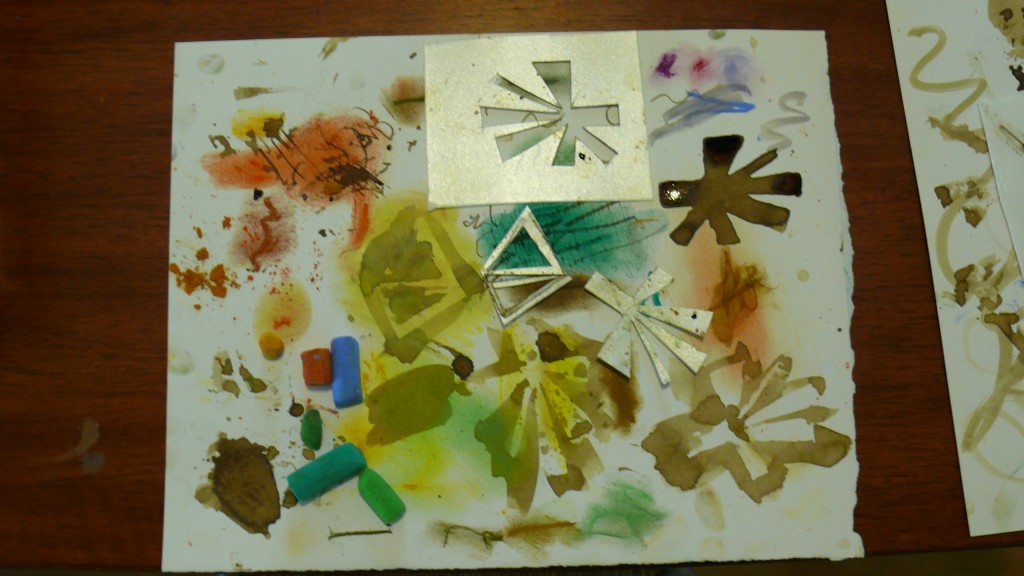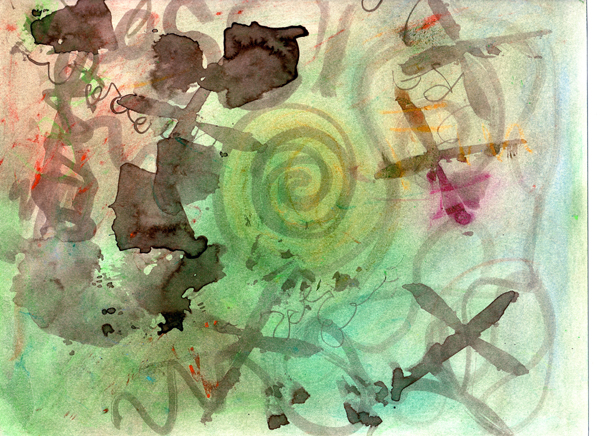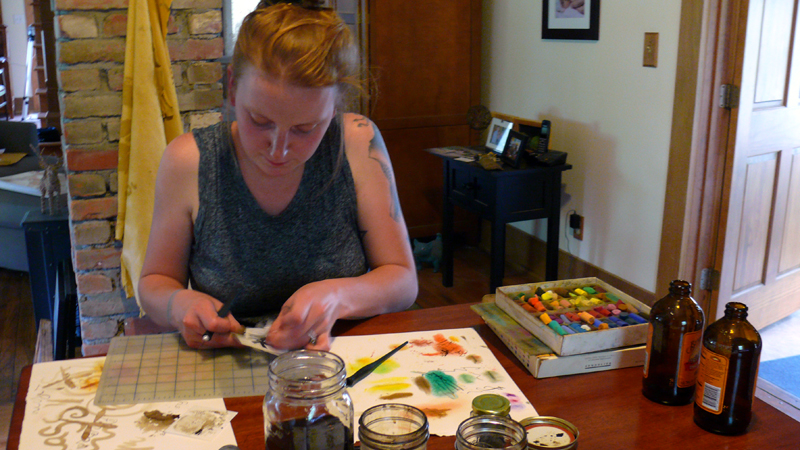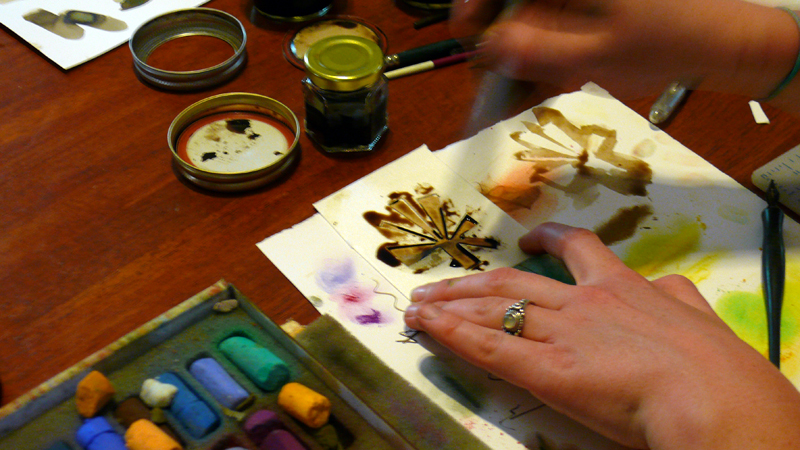May 29, 2014 – Meeting with Cassidy to explore ways to work with layers.
We met to explore ways to create visual layers with soft pastel, stencils and black walnut ink.
Cassidy selected colors from a box of half stick Sennelier pastels. She began to work pastel into the paper. The dry media worked as a stain on the surface of the paper, and yet stayed transparent so that earlier marks were still visible. This seemed promising, especially when working over marks on white paper. It opened the possibility to create soft color to replace the white background. The effect might be to make it look like a plaster base, or an ancient wall.
We tried a thin styrofoam, often used with school children to make stamps by pressing in the background area of a stamp image. But the ink ran off the non-porous surface of the paper, leaving a blotchy image.
Instead, we began to cut stencils.
As Cassidy cut a stencil, she realized that she could use the cut out part of the stencil paper as negative space, and paint with the brush around the cut out. Then she realized she could fill in the image space with ink by holding down the stencil and brushing in the ink.
As we began to imagine the possibilities, we considered using stamps and stencils to make geometric marks, and to cut organic forms based on the leaves of plants from the Flock house gardens. The contrast between organic forms and mathematical forms could represent nature in relationship to science.
As we looked at the experimental pages, we wondered if there was a better way to create the stencil. The thickness of the styrofoam made it possible for the ink to leak under the cut out area. Maybe we need different brushes to apply the ink. Maybe we can try making stencils with contact paper, which would be easy to cut (spontaneous) and thinner.
We also want to combine the ink with oil pastel to take advantage of the resist nature of the oil pastel.




